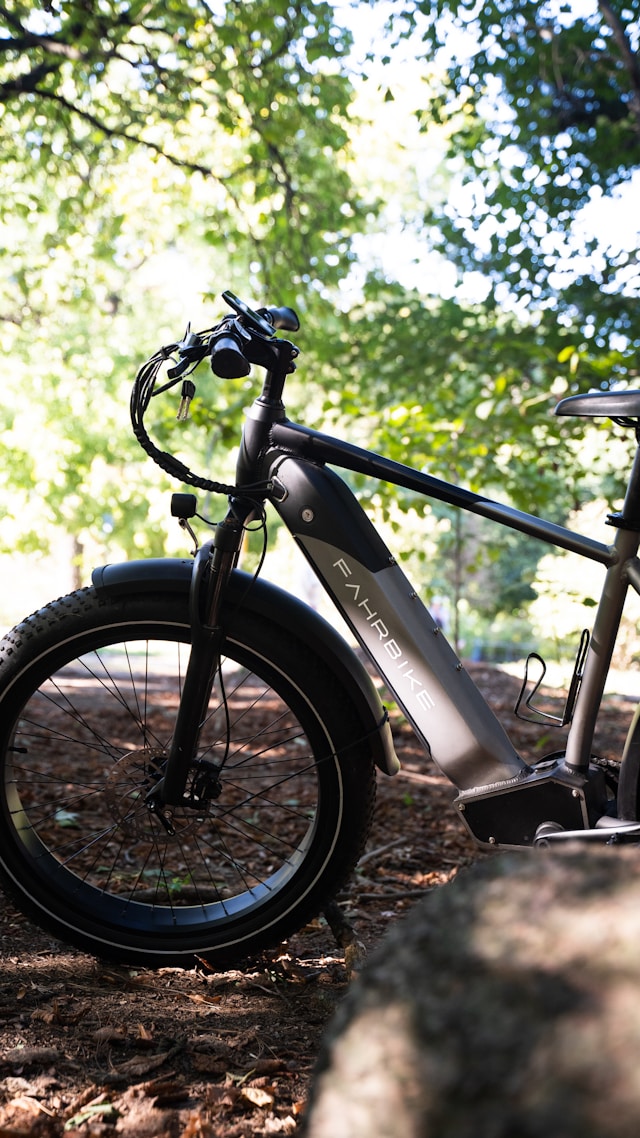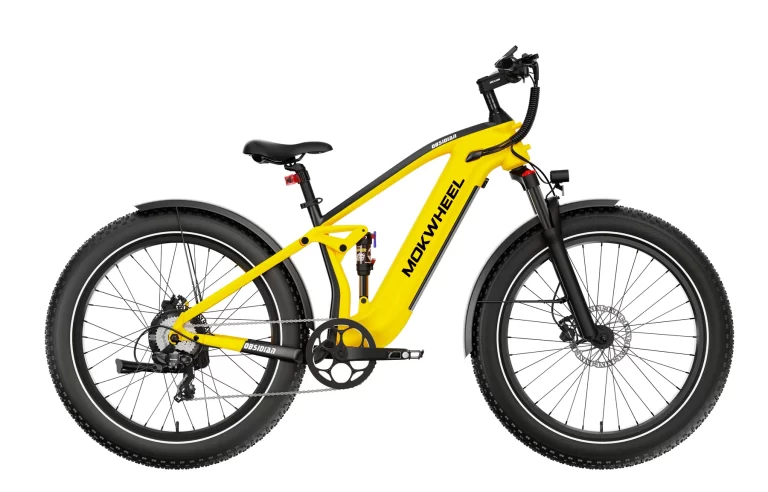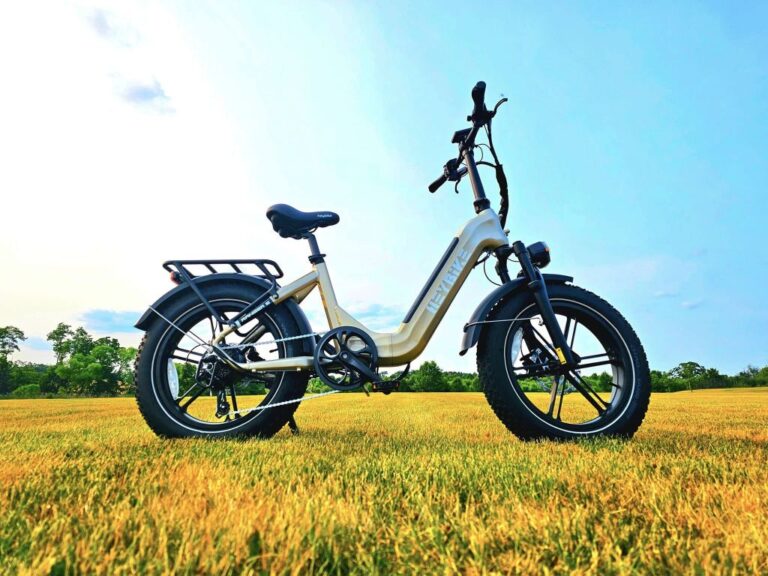How Long Do Ebike Batteries Last?
Imagine this: you’ve meticulously planned a scenic ebike adventure through rolling hills and charming countryside. The route winds past vineyards and quaint villages, promising a breathtaking escape. But as you pack your gear, a nagging question pops into your mind: will your ebike battery hold out for the entire journey?
Ebikes have taken the world by storm, offering a thrilling blend of human power and electric assistance. They’re perfect for conquering hills, extending your range, and rediscovering the joy of cycling. However, unlike a traditional bike, ebikes rely on batteries, and their lifespan directly impacts your riding experience. A robust battery fuels your freedom to explore further, while a limited range can clip your wings and leave you stranded mid-adventure.
In this blog post, we’ll delve into the world of ebike batteries, exploring factors that influence their lifespan and offering practical tips to maximize their performance. We’ll equip you with the knowledge to confidently plan your next ebike adventure, ensuring your battery faithfully carries you to your destination.
Key Takeaways
- Ebike Battery Lifespan: A Spectrum, Not a Set Number: The lifespan of an ebike battery can vary considerably, ranging from 2 to 10 years. This variation depends on a multitude of factors, including how you use your ebike, how you charge the battery, and the overall quality of the battery itself.
- The Inevitable Decline: Understanding Battery Degradation: Over time, all ebike batteries experience a gradual degradation in capacity. This means they won’t be able to hold a charge for as long as they did when new, resulting in a reduced riding range.
- Be a Battery Care Pro: Habits for a Long-lasting Power Source: The good news is that you can significantly influence your battery’s lifespan by adopting some simple yet effective habits. These include avoiding extreme temperatures for storage and charging, using the original charger, and maintaining a moderate charge level whenever possible.
- Choosing the Right Ebike for Your Range Needs: When selecting an ebike, consider factors that impact battery consumption, such as the terrain you’ll be riding on, your weight, and the cargo you might carry. Opting for a higher battery capacity can be beneficial if you plan on tackling long distances or challenging hills.
How Long Do Ebike Batteries Last? The Lifespan Equation
The question of ebike battery lifespan is a crucial one for any rider. Unlike filling up a gas tank, ebikes rely on rechargeable batteries, and their capacity to hold a charge directly translates to your riding range. So, how long can you expect your trusty ebike battery to power your adventures?
The answer, unfortunately, isn’t a simple one-size-fits-all. Ebike battery lifespan can vary widely, ranging from 2 to 10 years. This variance depends on a multitude of factors, including usage patterns, charging habits, storage conditions, and even the quality of the battery itself.
However, there’s one key metric that provides a valuable benchmark: charge cycles. Just like your phone or laptop battery, ebike batteries have a finite number of times they can be fully charged and discharged before their capacity starts to degrade. This number typically falls within the range of 500 to 1000 cycles, depending on the specific battery chemistry.
Think of it like this: each charge cycle is like a tiny wrinkle on a piece of paper. Over time, these wrinkles accumulate, and the paper (representing your battery capacity) becomes less efficient at holding its shape. Understanding charge cycles empowers you to make informed decisions about your riding habits and charging practices, ultimately extending the lifespan of your ebike battery.
In the next sections, we’ll explore these factors in detail, helping you unlock the secrets to maximizing your ebike’s range and keeping the wheels turning for years to come.
RELATED CONTENT – Complete Guide to Electric Bike Charging; Tips, Tricks & Best Practices
Factors Affecting Ebike Battery Lifespan: Under the Hood of Your Ebike’s Power
Just like the engine is the heart of a traditional car, the battery serves as the lifeblood of your ebike. But unlike pouring gas into a tank, ebikes rely on complex battery technology that can be influenced by various factors. Understanding these factors empowers you to optimize your battery’s performance and extend its lifespan.
The Battery Battlefield: Lithium-Ion vs. Lead-Acid
The reigning champion in the ebike battery arena is lithium-ion (Li-ion) technology. Li-ion batteries offer a clear advantage in terms of lifespan, typically lasting anywhere from 500 to 1000 charge cycles. They’re also lighter, more compact, and hold a higher charge capacity compared to their lead-acid counterparts.
Lead-acid batteries, once the dominant force in ebikes, are slowly being phased out due to their shorter lifespan, typically around 200 to 300 charge cycles. Additionally, they’re heavier and bulkier than Li-ion batteries, adding unnecessary weight to your ebike.
While lead-acid batteries might still be found in some older ebike models, the clear winner in terms of lifespan and overall performance is lithium-ion technology. But that’s just the first chapter in the story. Let’s delve deeper into the other factors that can influence how long your ebike battery faithfully powers your rides.
RELATED CONTENT – How Far Can You Really Go on an Ebike? Maximizing Range Tips Included
Usage Patterns: The Art of Balancing Power and Range
Now that we’ve explored the battery types that power your ebike, let’s shift gears and examine how your riding habits can impact its lifespan. Just like pushing your car engine to its limits reduces gas mileage, demanding tasks on your ebike can drain the battery faster. Here are some key usage patterns to consider:
- Conquering Hills: Ah, the beauty of ebikes – they help you conquer those challenging inclines that might leave you winded on a traditional bike. However, this newfound climbing prowess comes at a cost. Hills demand more power from the motor, which translates to increased battery drain. Ebikes with powerful motors can handle hills with ease, but they’ll also deplete the battery faster compared to riding on flat terrain.
- Hauling Cargo: Ebikes are fantastic for errands and carrying light cargo. But keep in mind that the additional weight puts more strain on the motor and, consequently, the battery. If you plan on using your ebike for regular grocery runs or hauling gear, consider a model with a higher battery capacity to compensate for the increased weight.
- Rider Weight: While rider weight plays a role in battery consumption, it’s generally less significant compared to factors like hills and cargo. However, it’s still worth keeping in mind, especially for riders on the heavier side. Lighter riders might experience slightly better range compared to their heavier counterparts on identical ebikes.
Understanding these usage patterns empowers you to make informed decisions about your rides. If you anticipate tackling a lot of hills or carrying extra cargo, consider adjusting your motor assist level or opting for a battery with a higher capacity. By being mindful of these factors, you can optimize your battery usage and extend its lifespan for years of ebike adventures.
RELATED CONTENT – Charging an Ebike with a Power Bank
Charging Habits: Fueling Your Ebike for a Long Life
Just like any sophisticated machine, your ebike battery thrives on proper care. Understanding the best charging practices is crucial for maximizing its lifespan and ensuring optimal performance on every ride. Here are some key habits to cultivate:
- Shallow Discharges are Your Friend: While it might be tempting to completely drain your battery before plugging it in, this practice can actually shorten its lifespan. Modern lithium-ion batteries perform best when maintained within a specific charge range, typically between 20% and 80%. Aim for “shallow discharges” by topping up your battery before it reaches complete depletion.
- The Original Charger Reigns Supreme: Every ebike comes with a specific charger designed to work optimally with its battery. While using a generic charger might seem convenient, it can deliver an incorrect voltage or current, potentially damaging the battery in the long run. Stick to the original charger that came with your ebike for safe and efficient charging.
- Night Owls, Rejoice! Overnight Charging is a Green Light: Many riders worry about leaving their ebikes plugged in overnight. However, modern ebike chargers are equipped with smart features that automatically stop charging once the battery reaches full capacity. So, there’s no need to fret about overcharging if you leave your ebike plugged in overnight.
By following these simple charging practices, you can significantly extend the lifespan of your ebike battery. Remember, your battery is an investment, and treating it right ensures it delivers optimal performance for years to come.
RELATED CONTENT – Top Five Electric Bike Batteries
Storage: Keeping Your Ebike Battery Happy When You’re Not Riding
Your ebike battery isn’t just a source of power for your rides; it’s also an investment in your long-term riding enjoyment. But just like a delicate flower, batteries can be sensitive to their environment, particularly when it comes to storage. Here’s how storage conditions can impact your ebike battery’s lifespan:
- Temperature Extremes: The Goldilocks Zone of Battery Bliss: Batteries, like humans, prefer a comfortable temperature range. Extreme heat or cold can wreak havoc on their internal chemistry, accelerating degradation and reducing lifespan. Ideally, store your ebike battery in a cool, dry place with a temperature between 50°F (10°C) and 77°F (25°C). Avoid storing your ebike in direct sunlight or in excessively hot or cold environments like garages during peak summer or winter.
- Long-term Storage: Tucking Away Your Ebike for a While?: If you’re planning on storing your ebike for an extended period, some additional considerations come into play. First, it’s best to partially charge the battery (around 50% capacity) before storing. Letting it sit completely drained for months can put stress on the cells. Additionally, try to store it in a location with a moderate temperature, as discussed earlier. Every few months, it’s also advisable to check on the battery and give it a top-up charge to prevent it from dropping to a very low level.
By following these storage tips, you can ensure your ebike battery remains happy and healthy during its downtime, ready to power your next adventure whenever you hit the road.
RELATED CONTENT – On the Go Strategies for Charging an Ebike While Traveling
Brand and Quality: Investing in a Battery Built to Last
The world of ebike batteries isn’t a one-size-fits-all proposition. Just like with any product, quality and brand reputation can play a significant role in lifespan. Higher quality batteries from reputable ebike manufacturers tend to be built with superior materials and employ better quality control processes. This translates into batteries that can withstand more charge cycles and deliver a longer lifespan overall.
Here’s why brand and quality matter:
- Superior Cell Technology: Reputable ebike manufacturers often invest in high-quality lithium-ion cells from leading brands. These cells are designed for extended lifecycles and offer better performance compared to lower-grade alternatives.
- Smarter Battery Management Systems (BMS): The BMS acts as the brain of your ebike battery, regulating voltage, current, and temperature. A well-designed BMS from a reputable brand can help prevent overcharging, overheating, and other issues that can shorten battery life.
- Rigorous Testing and Quality Control: Leading ebike manufacturers subject their batteries to rigorous testing procedures to ensure they meet safety and performance standards. This focus on quality translates into batteries that are built to last.
While price can certainly be a factor when choosing an ebike, remember that a high-quality battery from a reputable brand is an investment in your long-term riding enjoyment. It will likely offer a longer lifespan, fewer headaches down the road, and potentially save you money on replacement costs in the future.
Maximizing Ebike Battery Lifespan: Keeping Your Battery Happy for the Long Haul
By now, you’ve delved into the fascinating world of ebike batteries and explored the various factors that influence their lifespan. Remember, the key takeaway is that there’s no single magic bullet for maximizing battery life. It’s all about adopting a holistic approach that considers usage patterns, charging habits, storage practices, and even brand quality.
Here’s a quick recap of the key factors that affect ebike battery lifespan:
- Usage Patterns: Hills, cargo weight, and rider weight all contribute to battery drain.
- Charging Habits: Avoid full discharge, use the original charger, and don’t worry about overnight charging with modern equipment.
- Storage: Keep your battery in a cool, dry place with moderate temperatures (ideally between 50°F and 77°F). For long-term storage, partially charge it (around 50%) and check on it periodically.
- Brand and Quality: Higher quality batteries from reputable brands tend to offer longer lifespans due to superior materials and quality control.
Now that you’re armed with this knowledge, let’s translate it into actionable tips to maximize your ebike battery’s lifespan:
- Embrace the Power of “Shallow Discharges”: Don’t wait until your battery is completely drained before plugging it in. Aim for “shallow discharges” by topping it up when it reaches around 20% capacity. Read these tips to extend the life of your ebike battery
- Plan Your Ride and Choose the Right Assist Level: If you know you’ll be tackling a lot of hills, consider using a lower assist level to conserve battery power.
- Lighten Your Load When Possible: For shorter trips, consider leaving extra cargo behind to reduce strain on the battery.
- Store Smart: Find a cool, dry place for your ebike and battery, especially during extreme weather conditions.
- Invest in Quality: When purchasing an ebike, consider models with batteries from reputable brands that carry industry certifications for safety and performance.
By following these tips and adopting a battery-conscious mindset, you can significantly extend the lifespan of your ebike battery and keep your adventures rolling for years to come.
When to Say Goodbye: Recognizing the Signs of a Tired Ebike Battery
Even with the best care, all ebike batteries eventually reach the end of their lifespan. But how do you know when it’s time to consider a replacement? Here are some telltale signs of a battery that might be nearing retirement:
- Reduced Range: This is perhaps the most noticeable indicator. If you find yourself needing to recharge your ebike more frequently to cover the same distance, it could be a sign of reduced battery capacity.
- Difficulty Holding a Charge: Does your ebike battery seem to drain more quickly than usual, even after a full charge? This could be another symptom of degradation.
However, before jumping to the conclusion that a replacement is necessary, there are a few basic troubleshooting steps you can take:
- Check the Tire Pressure: Underinflated tires can increase rolling resistance, requiring more motor power and potentially impacting range.
- Inspect the Brakes: Dragging brakes can also put extra strain on the motor and reduce battery efficiency.
- Clean the Drive Chain: A dirty or rusty drive chain can cause friction and decrease overall efficiency.
If you’ve addressed these potential culprits and your battery issues persist, then it might be time to consider a replacement.
Warranty and Replacement Costs: Planning for the Future
Most ebike batteries come with warranties that typically range from 1 to 2 years. These warranties usually cover manufacturing defects but might not encompass normal wear and tear associated with battery degradation.
The cost of replacing an ebike battery can vary depending on the brand, capacity, and voltage. In general, expect to spend anywhere from $300 to $1000 for a replacement battery.
While replacing a battery might seem like an additional expense, consider it an investment in extending the life of your ebike and keeping your adventures rolling. Remember, a well-maintained ebike with a healthy battery can provide years of enjoyment and eco-friendly transportation.
Ebike Battery Comparison: Putting Lifespan in Perspective
While we’ve focused on maximizing the lifespan of your ebike battery, it’s helpful to see how it compares to other forms of transportation. Here’s a quick comparison to put things in perspective:
- Ebike Battery Lifespan (2-10 years): As discussed throughout this post, ebike battery lifespan can vary depending on usage patterns, charging habits, and quality. With proper care, you can expect your ebike battery to last anywhere from 2 to 10 years, translating to thousands of charging cycles.
- Car Battery Lifespan (3-5 years): Car batteries typically have a shorter lifespan compared to ebike batteries, lasting around 3-5 years. This is because car batteries are constantly under stress, even when the car is off, due to features like alarms and infotainment systems.
- Gas Mileage: While not directly comparable, it’s interesting to consider the range an ebike battery offers compared to the gas mileage of a car. The average ebike battery on a full charge can provide a range of 20-50 miles, depending on factors like terrain and assist level. A typical car, on the other hand, might achieve gas mileage of 25-35 miles per gallon (MPG).
The Takeaway: While car batteries and gas mileage offer different advantages, ebike batteries can provide a respectable lifespan, especially when considering the lower energy consumption and environmental benefits of ebikes. By adopting the tips outlined in this post, you can maximize your ebike battery’s lifespan and enjoy years of eco-friendly riding.
RELATED CONTENT – Cost of Owning Ebike Compare to a Car or Traditional Bike
Choosing the Best Ebike Battery for Long Rides: Fueling Your Ebike Adventures
Conquering long distances on your ebike is an exhilarating experience. But to ensure you don’t run out of juice halfway through your journey, choosing the right battery is paramount. Here are some key factors to consider when selecting the best ebike battery for long rides:
- Battery Capacity (Wh): Battery capacity, measured in watt-hours (Wh), is the golden metric when it comes to range. Higher Wh ratings indicate a larger battery capacity and therefore, a greater potential range on a single charge. For long rides, prioritize batteries with higher capacities, ideally in the range of 500Wh or more.
- Motor Power: The power of your ebike motor also plays a role in battery consumption. Higher wattage motors can propel you up hills with ease but will drain the battery faster compared to lower wattage motors. If long-distance riding is your primary focus, consider a balance between motor power and efficiency. A mid-drive motor with moderate wattage (around 250W-500W) can offer a good compromise between power and range.
- Your Riding Style: How you ride your ebike significantly impacts battery life. Riders who frequently use high assist levels, tackle challenging terrain, or carry extra cargo will naturally drain the battery faster. Be realistic about your riding style and choose a battery capacity that aligns with your needs.
Here are some helpful resources to compare ebike battery specifications and find the perfect match for your long rides:
- Ebike Manufacturer Websites: Most ebike manufacturers prominently display battery specifications on their website. You can compare the Wh rating and other details of various battery options offered for a specific ebike model.
- Online Ebike Retailers: Major online ebike retailers often have comprehensive filters that allow you to search for ebikes based on battery capacity. This can be a great way to compare different models and find ebikes equipped with long-range batteries.
- Ebike Battery Reviews: Several websites and publications publish reviews of ebike batteries. These reviews can provide valuable insights into the performance, range, and compatibility of different battery models.
By carefully considering these factors and leveraging the available resources, you can select the ideal ebike battery to power your long-distance adventures and keep the wheels of exploration turning for miles to come.
FAQs
Absolutely! Many ebikes are designed to accommodate a second battery, effectively doubling your potential range. This can be a great option for long-distance riders or those who tackle particularly challenging terrain.
Cold weather can reduce the lifespan of your ebike battery, but the impact is usually temporary. Lithium-ion batteries perform less efficiently in cold temperatures, so you might experience a shorter range on winter rides. However, once the battery warms up, its capacity returns to normal. Here are some tips for mitigating the effects of cold weather:
Store your ebike battery in a warm place before your ride.
Avoid leaving it outside in freezing temperatures for extended periods.
If possible, keep a spare battery stored indoors and swap it out with the cold one before your ride.
While there’s no single “cold weather” ebike battery, some models are known to perform better in low temperatures. Look for batteries with Lithium Iron Phosphate (LiFePO4) cells, which tend to offer better performance compared to standard Lithium-ion cells in cold conditions.
Modern ebike chargers are equipped with automatic shut-off features, so there’s no need to worry about overcharging if you leave your battery plugged in overnight. However, for long-term storage (weeks or months), it’s best to partially charge the battery (around 50%) and disconnect it from the charger.
You can purchase replacement ebike batteries from several sources:
The ebike manufacturer or authorized dealer: This is often the safest option, as they can guarantee compatibility with your specific ebike model.
Online ebike retailers: Many online retailers offer a wide selection of replacement ebike batteries. Be sure to double-check the specifications (voltage, capacity, etc.) to ensure compatibility with your ebike.
Third-party battery manufacturers: While tempting due to potentially lower costs, exercise caution when choosing third-party batteries. Always prioritize reputable brands that use high-quality cells and offer warranties.
Conclusion
The world of ebike batteries might seem complex at first glance. But by understanding the factors that influence lifespan and adopting a battery-conscious mindset, you can unlock the full potential of your ebike and conquer countless miles with confidence.
Remember, a healthy ebike battery translates to extended range, reduced costs, and a lighter environmental footprint. By following the tips outlined in this guide, you can empower yourself to become a master of ebike battery care and extend the lifespan of your trusty power source.
So, the next time you plan an ebike adventure, you can do so with the knowledge and confidence to keep the wheels turning and the scenery rolling by.
Now it’s your turn to share your experiences! Have questions about ebike batteries? Thinking about upgrading your battery for longer rides? We encourage you to leave a comment below and share your thoughts on maximizing ebike battery life. Happy riding!
External Sources
- Ebike Manufacturers Websites: Most reputable ebike manufacturers have detailed resources on their websites that cover battery specifications, care instructions, and frequently asked questions.
- The National Electrical Manufacturers Association (NEMA): https://www.nema.org/ This industry association sets standards for batteries, including some that apply to ebike batteries. Their website is a good resource for general information about battery technology and safety.
- Consumer Reports: https://www.consumerreports.org/ This trusted consumer organization publishes reviews and buying guides on a wide range of products, including ebikes. Their website is a good source of unbiased information to help you compare different ebike models and battery options.
Kristina Grant is not just an enthusiast but a true authority on electric bikes. Nestled in the coastal beauty of Virginia, Kristina has found the perfect backdrop for her passion for electric biking. As a dedicated wife and homeschooling mom, her life revolves around family, faith, and the thrill of adventure.
Originally hailing from Ohio, Kristina's journey with electric bikes began as a curiosity and quickly evolved into a deep expertise. Her blog is a testament to her love for electric biking, combining her fascination for eco-friendly transportation with her coastal lifestyle.
When she's not cruising the beach on her electric bike, you'll find Kristina indulging in her other loves: long walks along the shore, getting lost in a good book, and cherishing moments with her loved ones. With a heart as big as her love for animals, especially cats, Kristina brings a unique perspective to the electric bike world, grounded in her strong faith in God and her dedication to a sustainable lifestyle.
Through her blog, Kristina shares her extensive knowledge of electric bikes, offering valuable insights, tips, and recommendations to fellow enthusiasts. Whether you're a seasoned rider or a newcomer to the electric bike scene, Kristina's blog is your go-to source for all things electric biking, fueled by her passion, expertise, and the scenic beauty of coastal Virginia.







